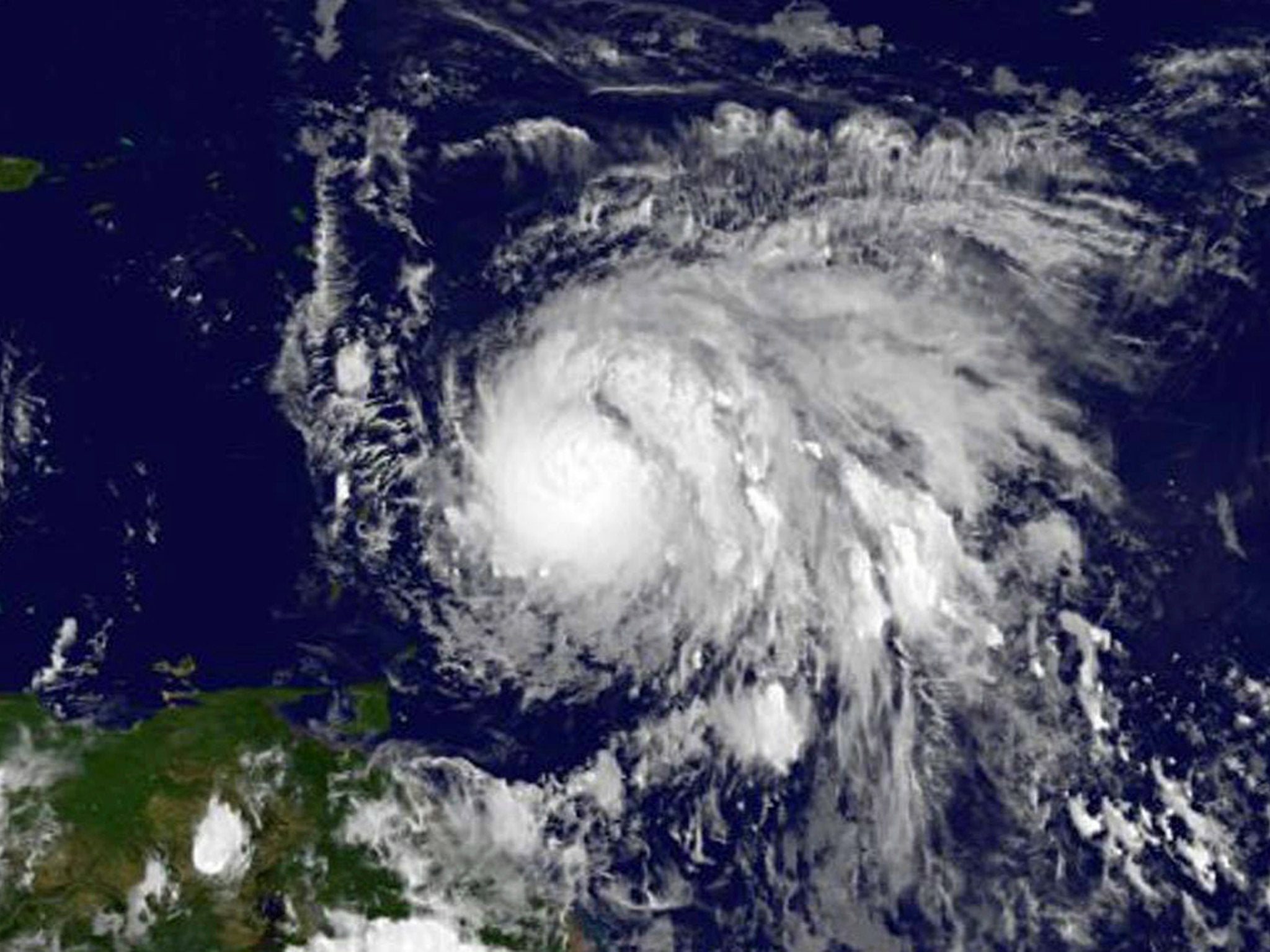Hurricane Maria becomes 'extremely dangerous' Category 5 storm as it approaches Caribbean
Donald Trump has approved an emergency declaration for the US Virgin Islands

Hurricane Maria has become an "extremely dangerous" category 5 storm, according to the National Hurricane Centre.
The storm, which is currently located over the French Caribbean island of Martinique, is maintaining winds of nearly 160 mph (257 km/h). The Hurricane Centre predicts it will strengthen over the next 24 to 36 hours.
The hurricane is forecast to move northwest, over Dominica and the adjacent Leeward Islands, and then proceed to Puerto Rico and the Virgin Islands on Tuesday night.
The Hurricane Centre warned of "large and destructive waves" and life-threatening surf and rip tides at the centre of the hurricane. Surrounding islands could be hit by rain strong enough to produce life-threatening floods and mudslides.
President Donald Trump has approved an emergency declaration for the US Virgin Islands.
The Virgin Islands were devastated by Hurricane Irma just weeks ago. The category storm which made landfall in some places as a Category 5 hurricane killed dozens of people across the Caribbean, and damaged 90 per cent of the buildings on several islands. Some areas are still without power.
“I don’t think anybody’s ever been hit by a storm like that," Beth Tamplin Jones, a Virgin Islands resident, told Reuters of Irma. "To see another one coming is just so discouraging.”
The storm does look likely to pass over Barbuda and Antigua – two of the islands hit worst by Hurricane Irma – but could still send strong winds and rain their way.
The National Guard has put the deployment of more than 100 hurricane recovery troops on hold in anticipation of the coming storm.
Puerto Rico, meanwhile, has not been hit by a hurricane this strong since 1928. The last hurricane to hit the US territory directly was Hurricane Georges in 1998.
Nevertheless, the outer edges of Irma sent punishing winds and rain to Puerto Rico. Eighty-five per cent of people in the metropolitan area of the capital, San Juan, still do not have power.
The country is now being forced to ration basic supplies, including water, as residents rush to grocery stores in anticipation of Maria. State officials have opened more than 400 shelters, and warned residents in flood-prone areas to evacuate.
“Flood-prone areas must be abandoned," Public Security Secretary Héctor Pesquera said. "If not, you will die."
The President's emergency declaration mobilises the Federal Emergency Management Agency (Fema) to coordinate disaster relief efforts. The declaration also frees up federal funding for hurricane relief.
Join our commenting forum
Join thought-provoking conversations, follow other Independent readers and see their replies
Comments